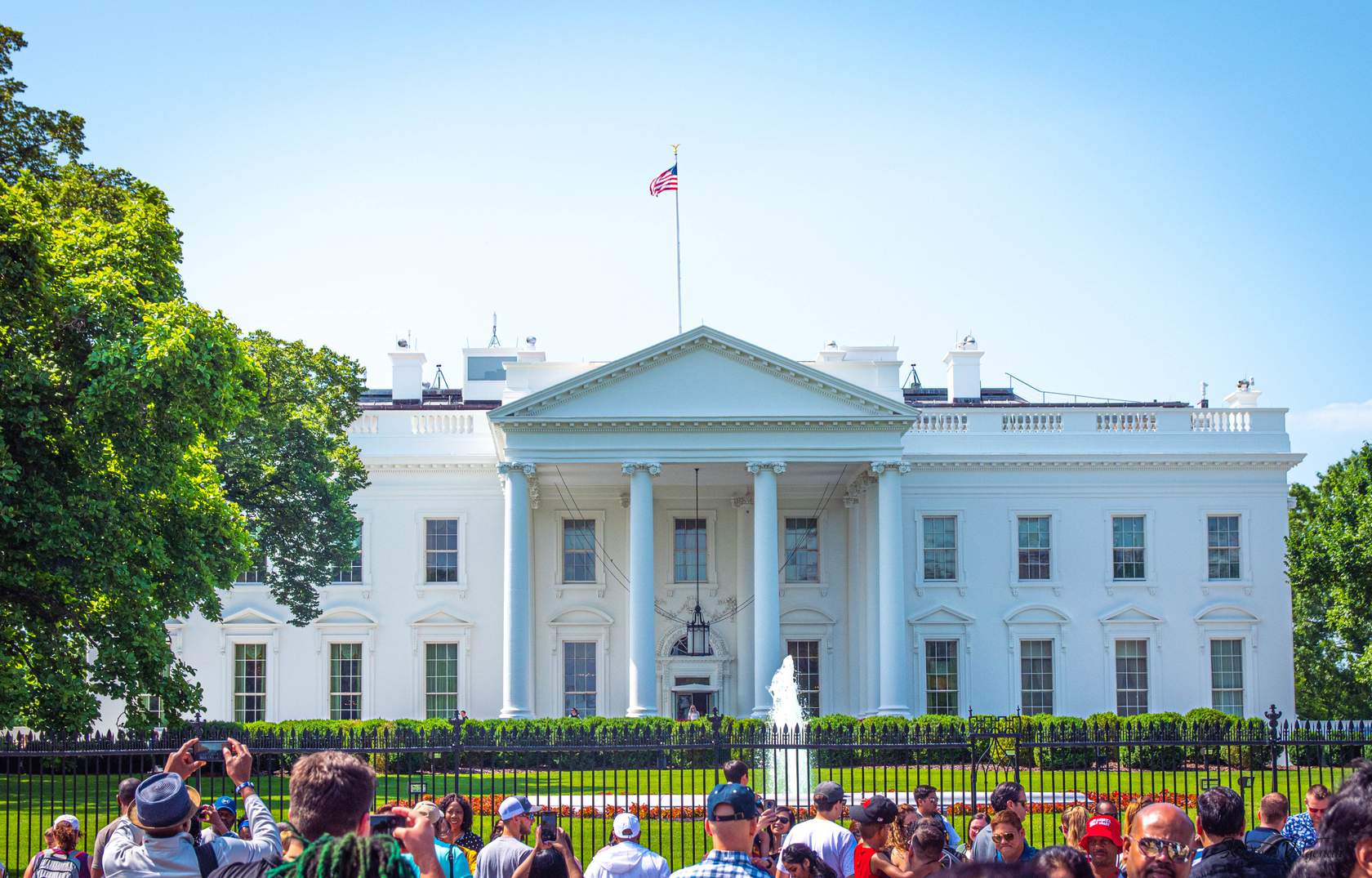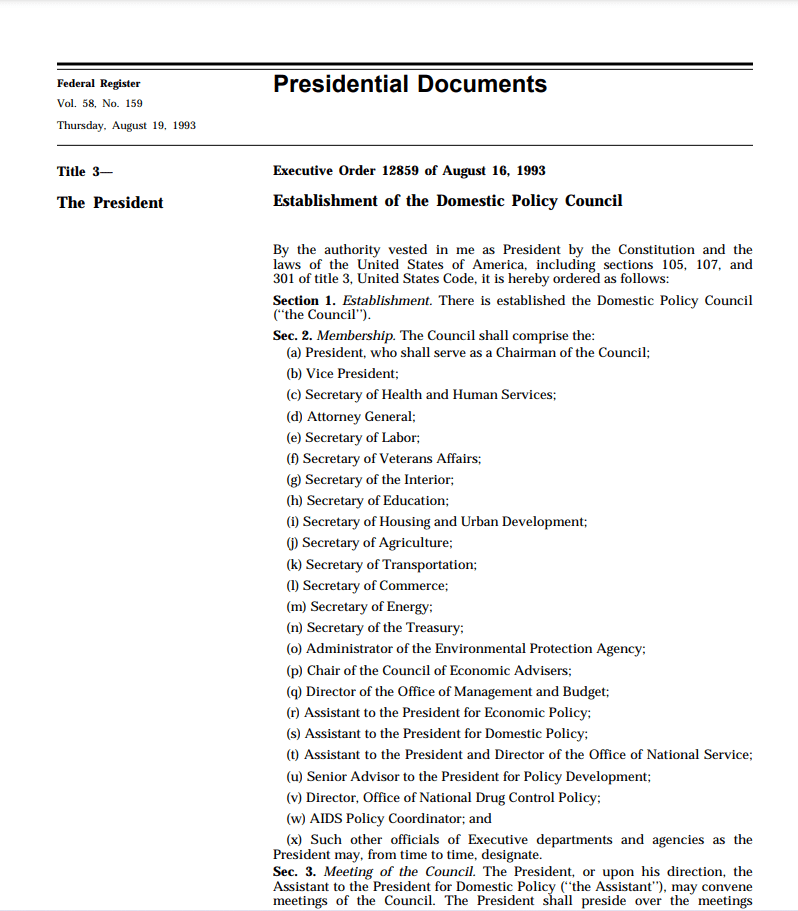The President’s staff is housed within the Executive Office of the President, commonly called the EOP. The EOP staff supports the President’s work in order for him to govern effectively. The EOP was created in 1939 by President Franklin D. Roosevelt. The EOP includes the President’s senior advisors such as the U.S. Trade Representative, and the staff that supports their work. While some offices were established by Congress, such as the Office of Science and Technology Policy, other offices were established by Executive Order such as the National Economic Council. The Office of Management and Budget is also an EOP office that is most known for producing the President’s budget. Some of the major policy councils include:
- The Domestic Policy Council (DPC)
- The National Security Council (NSC)
- The National Economic Council (NEC)
Policy Councils (DPC, NEC, NSC, etc) at the White House are responsible for developing and overseeing policy implementation by the department/agencies.

Each Council is made up of the Principals of specific agencies
Both the number and makeup of policy councils can change from Administration to Administration. And the President can create councils based on their needs and wants. For example, President Bush created the Homeland Security Council after 9/11 (President Obama merged it with the National Security Council) and President Biden created the Gender Policy Council.
Policy councils are typically created by Executive Order which serves as a charter for its work and provides authority over the executive branch agencies.
Typically, policy councils manage the policy development and implementation of policies that are especially important to the President, as well as those that require cooperation between multiple departments or agencies.
How Policy Councils Work
Issues that affect the equities of more than one department or agency. EOs are usually initiated by the White House and affect more than one department or agency or affect the management of the entire executive branch. They are developed and coordinated throughout the executive branch; most commonly through a policy development process run by the White House policy councils. Policy councils are responsible for ensuring cohesion with the President’s goals and oversee the implementation of policy by the departments.

The makeup of a Policy Council is laid out in its founding document.
- Policy Coordinating Councils (PCCs) are the tools by which the Policy Council develops and vets policy ideas. PCCs are managed by WH staff (usually at the Special Assistant to the President level) and include departments/agencies with equities in the policy (usually at the Assistant Secretary level).
- Sub-PCCs are held to receive input from lower-level staff, and usually include subject matter experts who can focus on and vet specific policy questions.
- Disagreements within the PCC get elevated to the Deputies Council which is made up of the Deputy Secretaries. Disagreements within the Deputies Council get elevated to the Principals (ie, Secretaries, heads of agencies) which is attended by the President.
- The resultant policies developed through the policy councils become statements of policy by the President, either as EOs, PDs, Proclamations, etc., and are implemented by the Departments and Agencies.
- Sometimes, a PCC agrees on a course of action, which is then presented to the President for a decision. When a PCC cannot reach a unanimous opinion, the question can be taken to the President for a decision, with the relevant, disagreeing Principals (i.e., Cabinet Secretaries or heads of Agencies) making their respective arguments in a group meeting with the President. Once the President has agreed to a course of action on a policy, that policy is ready for execution by the relevant Department or Agency. Sometimes the policy is announced by the President in the form of an EO or other public statement.